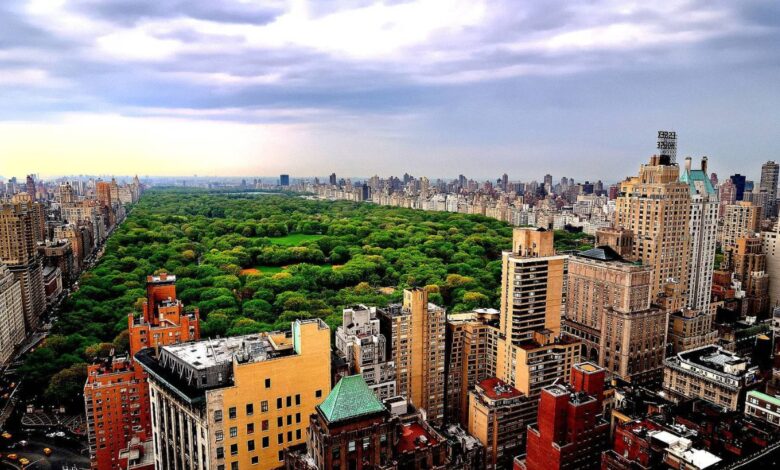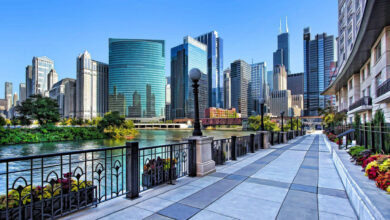Interesting Facts About New York: From Founding to Name Evolution

New York, often referred to as the “Big Apple,” is a city like no other. With its towering skyscrapers, bustling streets, and vibrant culture, it stands as a beacon of the American spirit. But beyond the lights of Times Square and the hustle of Wall Street, New York City is steeped in a rich and fascinating history. Let’s delve into some historical trivia, explore the origins of this great city, and unravel the story behind its iconic name.
Historical Trivia
New York City is a place where every corner tells a story, and its history is laden with little-known facts that surprise even lifelong New Yorkers. Did you know that New York was once the capital of the United States? Indeed, from 1785 to 1790, the city served as the nation’s capital and was the site of the inauguration of the first President, George Washington, at Federal Hall on Wall Street.
The city’s oldest building dates back to 1652. Located in Brooklyn, the Wyckoff Farmhouse Museum stands as a relic of the city’s Dutch colonial past. And speaking of old, the iconic Wall Street gets its name from the wooden wall Dutch settlers built in the 17th century to protect themselves from pirates and Native American attacks.
The famous Statue of Liberty, a symbol of freedom and democracy, was actually a gift from France in 1886. While she’s become synonymous with the city, not many people know that there are 354 steps inside the statue, leading visitors to an unparalleled view from her crown.
The Founding of New York City
New York’s origin story is as compelling as any modern-day superheroes. The city was founded in 1624 as a trading post by Dutch colonists. Initially called New Amsterdam, it was established on the southern tip of Manhattan Island. The area was chosen for its excellent harbour and the promise of profitable fur trade with local Native American tribes.
The fledgling city was part of a larger colony called New Netherland, which stretched across parts of what’s now New York, New Jersey, Delaware, and Connecticut. New Amsterdam was designed with a grid system of streets, reminiscent of the canals of Amsterdam, and Fort Amsterdam was constructed to defend the new city.
But the control of the city, and indeed the region, wasn’t to last long in Dutch hands. In 1664, English ships sailed into the harbour and captured New Amsterdam without a shot fired. The city was surrendered to the English, who promptly renamed it New York in honour of the Duke of York, the brother of King Charles II of England.
Evolution of New York’s Name
The story of how New Amsterdam became New York is as much a tale of international politics as it is a reflection of the city’s resilience. When the English took over, renaming the city was part of an effort to leave the Dutch legacy behind and reinforce English authority over the region. Despite the name change, many of the original Dutch residents stayed, and their influence can still be felt in place names like Harlem (Haarlem) and Brooklyn (Breukelen).
The name New York stuck through the years, even as the city changed hands once more in 1673, when the Dutch reclaimed it for a brief period, only to cede it permanently to the English in 1674. With this final exchange, New York solidified its identity and went on to become a pivotal port in the burgeoning British colonies.
Throughout the 18th century, New York grew in size and importance. It became the melting pot that we recognize today, with immigrants arriving from every corner of the globe to seek their fortune. The city’s name became synonymous with opportunity and diversity.
“New York” is not just a name; it’s a declaration of the city’s eclectic heritage. From its inception as a small Dutch outpost to its evolution into an economic powerhouse, the name New York captures the city’s indomitable spirit and continuous growth.
Every street in New York tells a piece of this story, from the Financial District, where modern-day entrepreneurs chase their ambitions, to the historical neighbourhoods where different waves of immigrants have shaped the cultural fabric of the city.
The changing name of New York reflects the city’s dynamic history, a history of conquests and transformations, which ultimately gave rise to a place known worldwide for its resilience, diversity, and boundless energy. It’s a name that carries with it the legacy of the past and the promise of the future. And in the heart of every New Yorker, it represents home.
Through changing times and fortunes, New York has never lost its lustre or its draw. Today, it stands proudly as a global centre for finance, culture, and entertainment, welcoming millions of visitors to its streets annually. Each passerby leaves with their stories and a piece of New York’s never-ending narrative. And as the city continues to thrive and transform, it invites future generations to add their chapters to the extraordinary tale of this incredible metropolis.
FAQs (Frequently Asked Question)
Why is New York City called the Big Apple?
The nickname “Big Apple” was popularised in the 1920s by John J. Fitz Gerald, a sports writer for the New York Morning Telegraph. He used it in reference to the big money prizes at the prestigious horse races in and around New York City, suggesting that they were the “big apples” everyone wanted to win. Over time, this term came to symbolise New York City’s prominence and allure as a place where people could achieve their dreams and ambitions. Today, the “Big Apple” is synonymous with the city’s vibrancy, diversity, and endless opportunities.
What was the original purpose of Wall Street’s wall?
Wall Street got its name from an actual wooden wall built by the Dutch settlers in the mid-17th century. The primary purpose of the wall was to protect the southern tip of Manhattan, where New Amsterdam (the early name for New York City) was located, from potential invasions and attacks by pirates and English and Native American groups. The wall marked the northern boundary of the New Amsterdam settlement and was dismantled by the English after they took control and renamed the city New York.
How did New York City grow to become such a significant urban centre?
New York City’s growth into a significant urban centre can be attributed to several key factors. Its strategic location on the eastern coast of the United States, with access to the Atlantic Ocean and the Hudson River, made it an ideal hub for trade and transportation. The construction of the Erie Canal in the 19th century further solidified its position by connecting New York City to the Great Lakes, opening up trade routes to the western territories.




